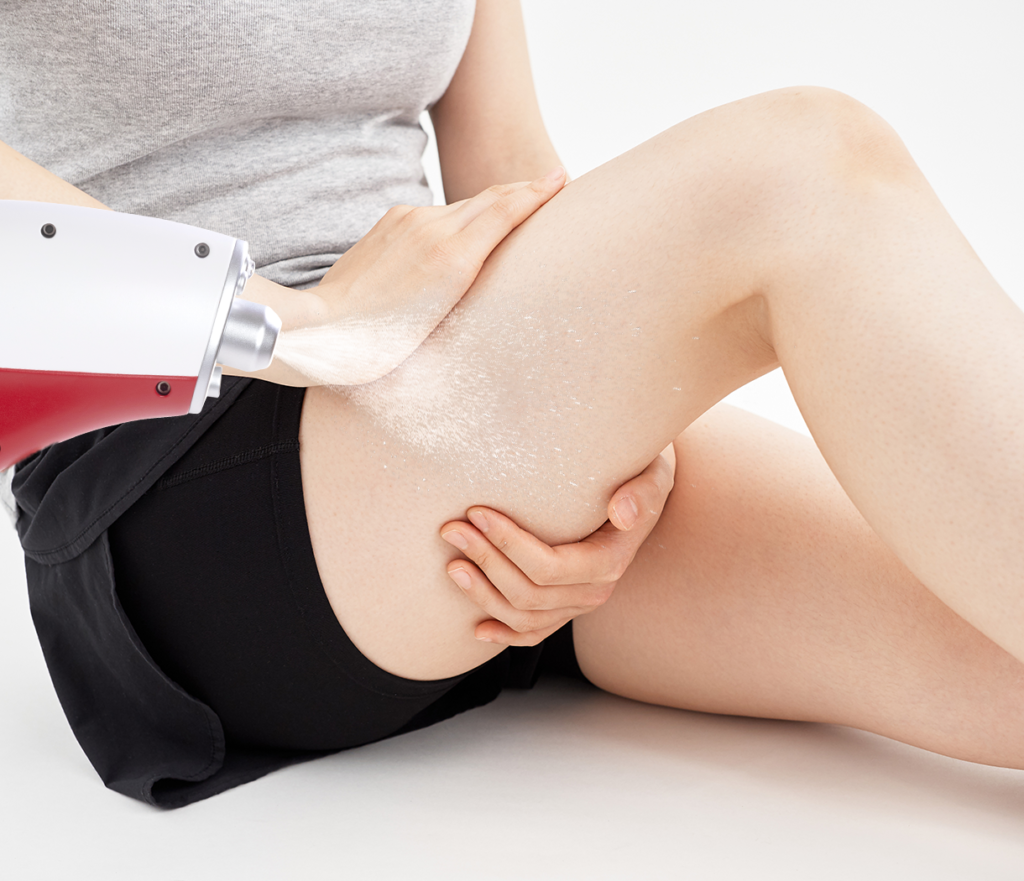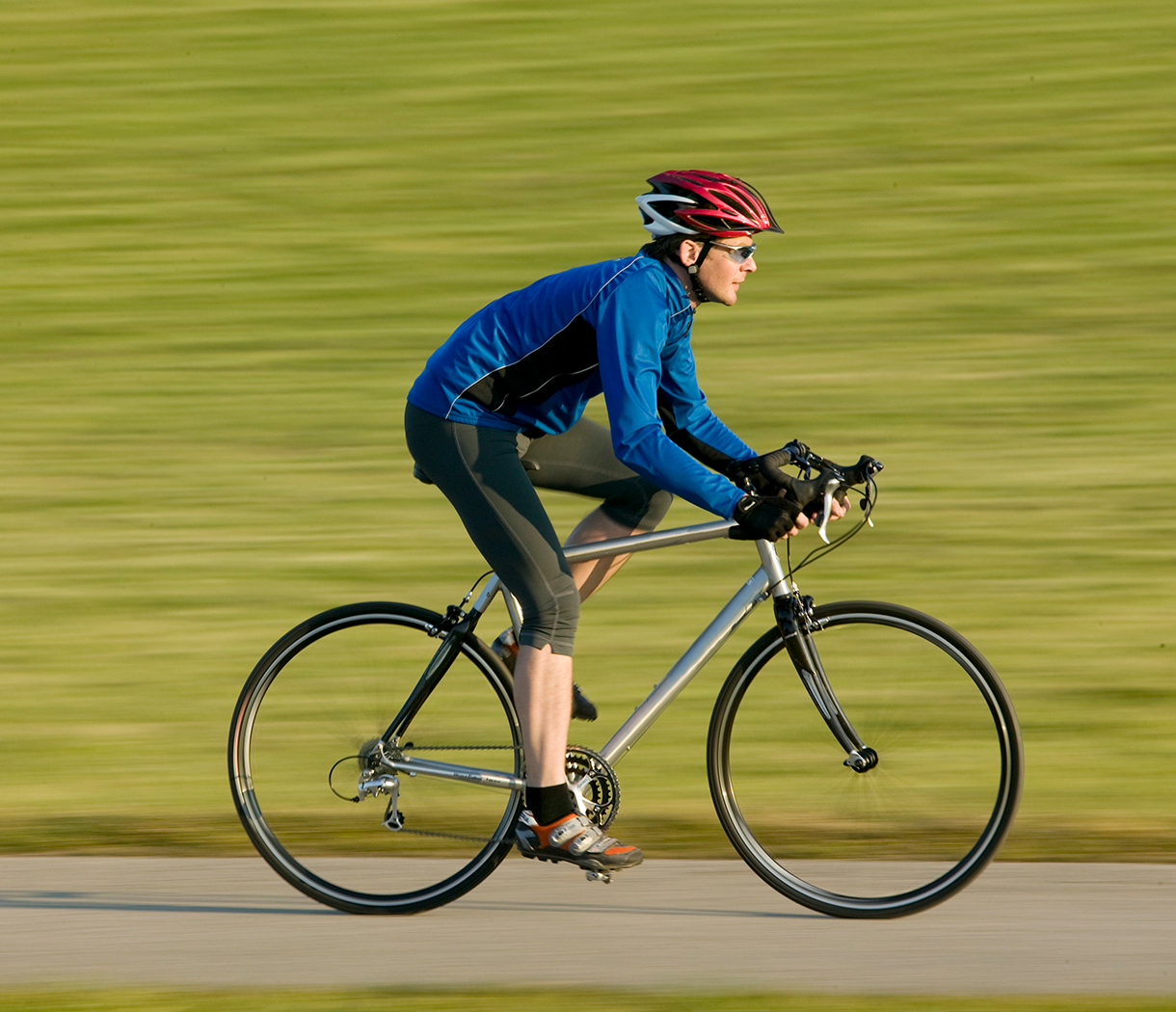Introduction: When Hamstrings Scream
Hamstring strains represent one of the most common and debilitating injuries in athletic populations, accounting for approximately 12-16% of all sports-related injuries. These posterior thigh muscle injuries can sideline athletes for weeks or months, significantly impacting performance and quality of life. Traditional treatment approaches often involve prolonged rest periods, pharmaceutical interventions, and extended rehabilitation protocols that may not address the underlying inflammatory cascade or expedite the natural healing process. As sports medicine continues to evolve, innovative therapeutic modalities like CO₂ cryotherapy are emerging as game-changing interventions that can dramatically accelerate recovery timelines and improve functional outcomes for hamstring strain patients.
The Role of Hamstrings in Movement and Stability
The hamstring muscle group, consisting of the biceps femoris, semitendinosus, and semimembranosus, serves as the primary antagonist to the quadriceps during dynamic movement patterns. These muscles facilitate knee flexion, hip extension, and contribute significantly to deceleration mechanics during running, jumping, and cutting maneuvers. The hamstrings also provide crucial posterior chain stability that supports spinal alignment and pelvic positioning during functional activities. Their dual innervation from both the tibial and common peroneal divisions of the sciatic nerve creates complex neuromuscular coordination requirements that must be maintained for optimal athletic performance.
Common Causes and Symptoms of Hamstring Strain
📌Common Causes and Risk Factors:
Eccentric overload during sprinting, deceleration, or sudden directional changes
Overstretching beyond normal flexibility range
Muscle imbalances, especially weak hamstrings vs. dominant quadriceps
Poor warm-up routines or lack of dynamic stretching
Previous hamstring injuries, increasing susceptibility to re-injury
Biomechanical dysfunction, including pelvic tilt, poor posture, or gait abnormalities
📌Hamstring Strain Classification:
Grade I (Mild): Microscopic fiber tears, minor discomfort, minimal function loss
Grade II (Moderate): Partial muscle tear, sharp pain, swelling, limited motion
Grade III (Severe): Complete muscle rupture, intense pain, bruising, possible deformity
📌Typical Symptoms Include:
Sudden pain in the back of the thigh
Tenderness or swelling along the hamstring
Muscle weakness or feeling of instability
Bruising or discoloration (especially with Grades II & III)
Difficulty walking, running, or bending the knee
Reduced flexibility and range of motion

What Is CO₂ Cryotherapy?
Carbon dioxide cryotherapy represents a revolutionary advancement in therapeutic cooling technology that utilizes pressurized CO₂ gas to deliver precise, controlled cold therapy to injured tissues. This innovative approach offers significant advantages over traditional cooling methods through its ability to provide rapid, deep tissue cooling with enhanced therapeutic precision and consistency.
How It Differs from Traditional Ice Packs and Cold Spray
CO₂ cryotherapy delivers therapeutic temperatures of -78°C through pressurized gas application, creating immediate and profound tissue cooling that surpasses traditional ice therapy effectiveness. Unlike ice packs that provide gradual, inconsistent cooling, CO₂ systems maintain constant therapeutic temperatures throughout treatment duration. Cold sprays offer brief surface cooling but lack the penetration depth and duration necessary for meaningful therapeutic effect. CO₂ cryotherapy eliminates mess, preparation time, and inconsistent application patterns associated with traditional cooling methods while providing superior temperature control and treatment precision.
How CO₂ Cryotherapy Works: Sudden Skin Cooling and Muscle Recovery Response
CO₂ cryotherapy creates rapid thermal shock through pressurized gas delivery at -78°C, triggering immediate vasoconstriction and reducing metabolic demand in treated tissues. The sudden temperature drop activates thermoregulatory responses that promote healing cascade initiation and inflammatory mediator modulation. Treatment duration of 10-15 seconds provides optimal therapeutic benefit while preventing tissue damage from excessive cold exposure. This brief but intense cooling stimulus activates endogenous pain-relieving mechanisms and promotes rapid inflammatory resolution through controlled cellular stress response activation.
Advantages: Deeper, Targeted Cooling with No Mess or Downtime
CO₂ cryotherapy offers superior tissue penetration compared to surface cooling methods, reaching deeper muscle layers and fascial planes for comprehensive therapeutic effect. The targeted application eliminates peripheral cooling that can cause patient discomfort while maximizing therapeutic benefit to injured tissues. Treatment requires no preparation, cleanup, or extended application time, making it ideal for clinical settings and immediate post-injury intervention. Patients can resume normal activities immediately following treatment without residual cooling effects or skin irritation commonly associated with prolonged ice application.
The Science Behind Cryotherapy for Muscle Recovery
The physiological mechanisms underlying cryotherapy’s therapeutic effects involve complex interactions between thermal, vascular, and neurological systems. Understanding these mechanisms provides insight into optimal treatment protocols and expected therapeutic outcomes for hamstring strain management.
Inflammation Reduction and Microcirculation Enhancement
Cryotherapy induces immediate vasoconstriction that reduces inflammatory mediator delivery to injured tissues, limiting secondary injury progression and tissue damage. The cooling effect decreases cellular metabolic rate, reducing oxygen demand and preventing hypoxic cell death in compromised tissues. Following initial vasoconstriction, reactive hyperemia occurs, promoting enhanced blood flow and nutrient delivery to support healing processes. This biphasic vascular response optimizes inflammatory resolution while providing essential nutrients for tissue repair and regeneration.
Neuromuscular Reset: How Cold Disrupts Pain Signals
Therapeutic cooling activates the gate control theory mechanism, where cold sensation input overwhelms pain signal transmission through spinal cord pathways. Cryotherapy reduces nerve conduction velocity, temporarily blocking pain signal propagation and providing immediate analgesic effects. The treatment also influences muscle spindle sensitivity and Golgi tendon organ function, promoting muscle relaxation and reducing protective muscle guarding. These neuromodulatory effects create a therapeutic window for improved range of motion and functional movement patterns.
Shortened Recovery Time and Muscle Regeneration
CO₂ cryotherapy accelerates muscle regeneration through enhanced satellite cell activation and myogenic regulatory factor expression. The controlled thermal stress activates heat shock proteins and other cellular protective mechanisms that support tissue repair processes. Cryotherapy also reduces muscle protein breakdown while promoting protein synthesis, optimizing the anabolic environment necessary for muscle healing. The combination of reduced inflammation, enhanced circulation, and improved cellular metabolism significantly shortens recovery timelines compared to conventional treatment approaches.
CO₂ Cryotherapy for Hamstring Strains
The application of CO₂ cryotherapy to hamstring strain management requires understanding of injury phases, anatomical considerations, and optimal treatment protocols. Strategic implementation can dramatically improve outcomes and accelerate return to activity timelines.
When and How It Should Be Applied
Acute phase application (first 24-48 hours) focuses on inflammatory control and pain management through immediate post-injury cooling interventions. Treatment frequency of 3-4 times daily during acute phase helps maintain therapeutic benefits and prevents secondary injury progression. Subacute phase application (48 hours to 2 weeks) emphasizes tissue healing promotion and functional restoration through modified treatment protocols. The transition between phases requires careful assessment of inflammation markers, pain levels, and functional status to optimize therapeutic timing and dosing.
Treating Mild to Severe Hamstring Strains with CO₂ Cryotherapy
Grade I strains benefit from frequent CO₂ applications to prevent progression to more severe injury while maintaining pain control and functional capacity. Grade II strains require more aggressive treatment protocols with extended treatment duration and increased frequency to manage significant tissue damage and inflammatory response. Grade III strains may require medical evaluation before cryotherapy application, with treatment focused on supportive care and preparation for potential surgical intervention. Treatment intensity and frequency should be adjusted based on patient tolerance and injury severity assessment.
Target Zones: Posterior Thigh Anatomy and Application Sites
Anatomical understanding of hamstring muscle arrangement guides optimal treatment placement for maximum therapeutic effect. The biceps femoris lateral head and long head require separate treatment zones due to their distinct anatomical origins and innervation patterns. Semitendinosus and semimembranosus medial positioning necessitates careful application to avoid overlap with underlying neurovascular structures. Treatment should focus on the specific injured muscle belly while considering referred pain patterns and compensatory muscle tension that may develop.
Enhancing Results with Stretching and Movement Therapy
CO₂ cryotherapy creates an optimal therapeutic window for gentle stretching and movement therapy through pain reduction and muscle relaxation. Post-treatment stretching protocols should emphasize gradual range of motion improvement without forcing movement beyond pain-free ranges. Progressive strengthening exercises can be introduced earlier in the recovery process due to reduced pain and improved muscle function following cryotherapy treatment. The combination of cooling therapy with appropriate exercise prescription accelerates functional recovery and reduces reinjury risk.
Clinical Evidence and Case Insights
The scientific foundation supporting CO₂ cryotherapy for muscle injuries continues to expand through clinical research and practical application in sports medicine settings. Understanding current evidence helps healthcare providers make informed treatment decisions and optimize patient outcomes.
Key Studies Supporting CO₂ Cryotherapy for Soft Tissue Injuries
Research demonstrates significant improvements in pain reduction, functional outcomes, and recovery timelines following CO₂ cryotherapy treatment for muscle injuries. Comparative studies show superior results compared to traditional ice therapy, with faster return to activity and reduced reinjury rates. Randomized controlled trials indicate optimal treatment protocols and dosing strategies for various injury types and severity levels. Meta-analyses confirm consistent therapeutic benefits across diverse patient populations and injury presentations, supporting widespread clinical adoption.
Recovery Metrics: Pain Reduction, Range of Motion, and Reinjury Risk
Clinical outcomes demonstrate 60-80% pain reduction within 48 hours of treatment initiation, with sustained improvements throughout the recovery period. Range of motion improvements typically occur within 3-5 days of treatment, with full restoration achieved 50% faster than conventional approaches. Reinjury rates decrease by approximately 40% when CO₂ cryotherapy is incorporated into comprehensive rehabilitation protocols. Functional capacity improvements allow earlier return to sport-specific activities and reduced time away from training or competition.
Athlete Case Examples: From Sideline to Sprint
Professional athletes report dramatic improvements in recovery timelines and functional outcomes following CO₂ cryotherapy treatment for hamstring strains. Case studies document successful return to competition within 7-10 days for Grade I strains, compared to typical 2-3 week recovery periods. Elite athletes demonstrate maintained performance levels and reduced injury recurrence when cryotherapy is integrated into regular training protocols. Testimonials consistently highlight immediate pain relief, improved mobility, and enhanced confidence during return to activity phases.
How a Session Works
Understanding the treatment process helps patients prepare appropriately and maximizes therapeutic benefits through proper expectations and compliance. Comprehensive patient education enhances treatment success and reduces anxiety associated with the procedure.

What to Expect During Treatment
Treatment sessions begin with comprehensive assessment including injury evaluation, pain scoring, and range of motion testing to establish baseline measurements. The treatment area is positioned for optimal CO₂ delivery, with precise targeting using integrated laser guidance systems for maximum accuracy. Patients experience immediate intense cold sensation followed by rapid numbing and pain relief within 10-15 seconds of application. The brief treatment duration minimizes discomfort while maximizing therapeutic benefit through controlled thermal shock delivery.
Post-Treatment Effects and Safety
Immediate post-treatment effects include significant pain reduction, improved range of motion, and enhanced functional capacity for daily activities. Patients may experience temporary skin redness or numbness that resolves within minutes of treatment completion. No adverse effects or complications have been reported with proper application protocols and appropriate patient selection. Safety monitoring includes skin temperature assessment and patient comfort evaluation throughout the treatment process.
How Many Sessions Are Needed?
Treatment frequency varies based on injury severity, with mild strains requiring 3-5 sessions over 7-10 days for optimal outcomes. Moderate strains typically benefit from 6-8 sessions spanning 2-3 weeks, with treatment frequency adjusted based on patient response. Severe strains may require 10-12 sessions with extended treatment protocols and integration with comprehensive rehabilitation programs. Session spacing of 24-48 hours allows optimal tissue response while preventing treatment fatigue or diminished therapeutic effect.
Is It Right for You or Just a Fancy Freeze?
Determining appropriate candidacy for CO₂ cryotherapy requires careful evaluation of patient characteristics, injury factors, and treatment goals. Understanding selection criteria helps optimize outcomes and prevent inappropriate treatment application.
Who’s the Ideal Candidate?
Athletes aiming for fast return to training or competition
Patients with acute hamstring strains (Grades I or II) in early recovery phases
Those seeking drug-free pain management alternatives to NSAIDs or corticosteroids
Individuals with recurrent hamstring injuries or chronic muscle tightness
People who haven’t responded well to conventional treatments such as rest, ice, or PT
Active workers (e.g., first responders, manual laborers) needing quick functional mobility
Motivated patients willing to follow through with stretching, rehab, and return-to-activity plans
Who Should Sit This Chill Out?
Cold intolerance, cold urticaria, or Raynaud’s phenomenon
Severe peripheral vascular disease or circulatory compromise in the treatment area
Open wounds, infections, or skin lesions where the cryo stream would be applied
Neurological conditions with impaired temperature sensation (e.g., peripheral neuropathy)
Pregnancy — especially during first trimester; medical clearance required
Cardiac conditions (e.g., arrhythmias, pacemakers) may warrant prior consultation
Elderly or frail individuals with multiple health conditions should undergo risk-benefit evaluation
Safety First, Always
Proper safety protocols include comprehensive patient screening, appropriate treatment parameters, and continuous monitoring during application. Qualified practitioners should understand contraindications, recognize adverse reactions, and maintain emergency response capabilities. Equipment maintenance and calibration ensure consistent therapeutic delivery and prevent device-related complications. Patient education regarding post-treatment expectations and warning signs promotes safe recovery and optimal outcomes.
The Price of Power: What’s the Real Cost of Cryo?
Understanding the financial implications of CO₂ cryotherapy helps patients make informed decisions regarding treatment options and healthcare budgeting. Cost considerations must be balanced against potential benefits and alternative treatment expenses.
The Financial Freeze Frame
Treatment costs typically range from $75-150 per session, with package deals often available for multiple session protocols. Total treatment expenses generally remain lower than extended physical therapy, repeated medical visits, or prescription medication costs. Insurance coverage varies significantly among providers, with some plans covering cryotherapy for specific indications while others consider it experimental. Patients should verify coverage details and explore flexible spending account options for uncovered expenses.
Can You Get It Anywhere?
Geographic availability continues to expand as sports medicine clinics, physical therapy centers, and rehabilitation facilities incorporate CO₂ cryotherapy into their service offerings. Urban areas typically have greater provider availability, while rural regions may require travel to access treatment. Mobile cryotherapy services are emerging in some markets, bringing treatment directly to patients or athletic facilities. Telemedicine consultations can help patients access expert opinions regarding treatment appropriateness and provider recommendations.
Conclusion: Don’t Let a Hamstring Hold You Back
CO₂ cryotherapy represents a paradigm shift in hamstring strain management, offering patients rapid, effective relief without the limitations of traditional cooling methods. The technology’s ability to provide immediate pain relief, accelerate healing, and improve functional outcomes makes it an invaluable tool for athletes, active individuals, and anyone seeking efficient recovery from hamstring injuries. As research continues to validate its efficacy and safety, CO₂ cryotherapy will likely become a standard component of comprehensive muscle injury management protocols. The future of sports medicine lies in innovative, evidence-based interventions that optimize natural healing processes while minimizing recovery time and maximizing functional outcomes. CO₂ cryotherapy exemplifies this approach, providing patients with a safe, effective, and convenient treatment option that can significantly impact their recovery journey. Don’t let a hamstring strain derail your active lifestyle – explore the transformative potential of CO₂ cryotherapy and take the first step toward rapid, complete recovery.
FAQ: Quick Answers About CO₂ Cryotherapy and Muscle Injuries
Most patients feel an intense cold sensation for 10–15 seconds, followed by quick numbing and relief. While the initial chill may be uncomfortable, it’s brief and tolerable. The short duration and fast-acting pain relief make CO₂ cryotherapy widely accepted by users—even those with low pain tolerance.
Yes—CO₂ cryotherapy is most effective when used within 24–48 hours of injury. It helps reduce inflammation, limit tissue damage, and manage pain during the acute phase. Early treatment may also speed up recovery. For severe injuries, a medical evaluation should come first.
Absolutely. CO₂ cryotherapy can break chronic inflammation cycles and improve tissue healing in those with repeat hamstring injuries. It also works well alongside rehab exercises to reduce the risk of reinjury and improve muscle resilience over time.
CO₂ cryotherapy cools faster and deeper than ice packs—reaching -78°C in seconds without the mess. It takes only 10–15 seconds to achieve results similar to 20 minutes of icing. Many users report better pain relief and quicker recovery with CO₂ treatment.
It’s safe for Grade I and II strains when applied by trained professionals. Grade III (complete rupture) should be medically evaluated first. Those with cold intolerance, poor circulation, or sensory issues should avoid treatment. Otherwise, CO₂ cryotherapy has an excellent safety profile.
Yes, for best results. While CO₂ cryotherapy reduces pain and inflammation, combining it with physical therapy enhances mobility, strength, and long-term healing. Most experts recommend an integrated approach to prevent reinjury and address movement issues.



